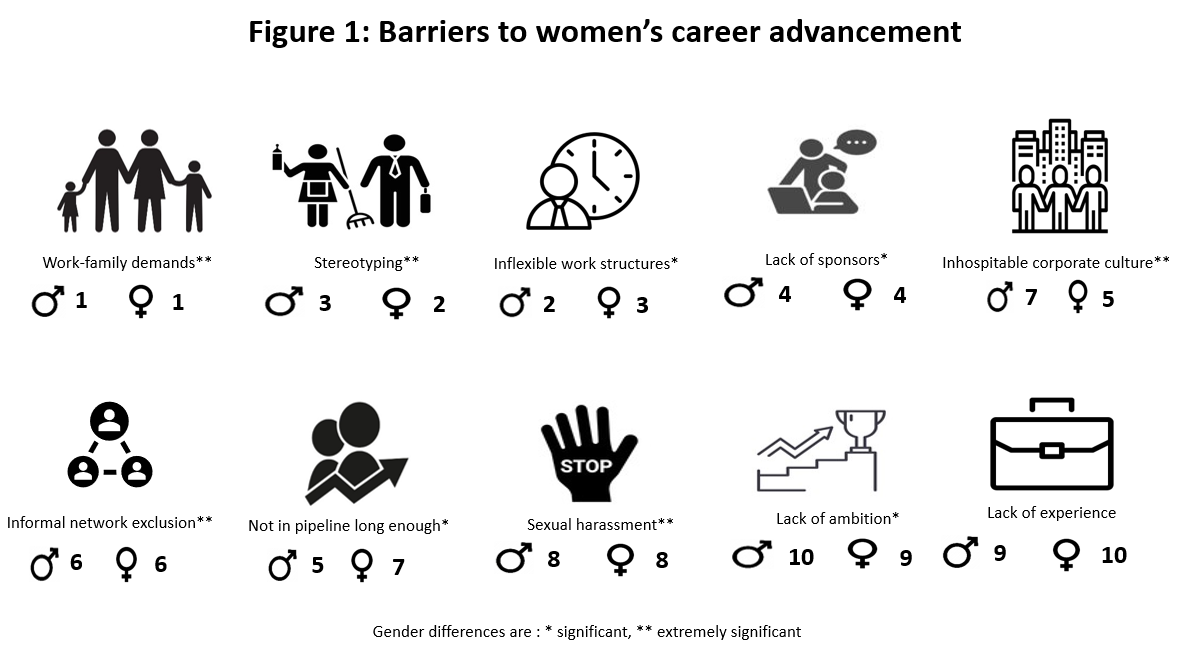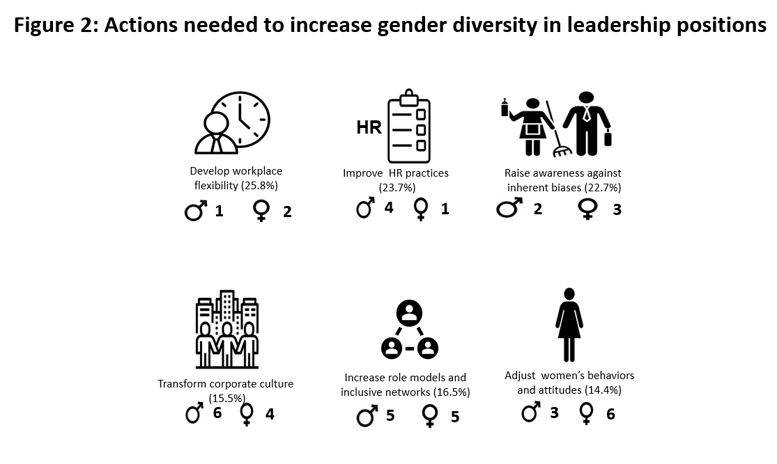
Dr. Sowon Kim
A presentation of research findings that confirm significant gender differences in diversity of leadership roles, specifically in perception when it comes to understanding why women occupy so few professional leadership roles.
Leadership diversity affects the bottom line
Women currently represent 70% of the hospitality industry’s workforce (Baum, 2015). Yet, by the end of 2020, only 17% of business leaders at the executive level were women and only 6% of CEOs were women (European Women on Boards, 2020). Leadership diversity matters because it affects the bottom line.
A recent study revealed that companies with over 30% women on their executive teams are significantly more likely to outperform those with 10-30% women. In turn, companies with at least a few women are more likely to outperform those companies with fewer or no female executives at all (McKinsey, 2020). This is not groundbreaking news. In fact, study after study has shown the positive results of gender diversity in leadership roles on work outcomes. However, change has been excruciatingly slow. So, what is holding us back?
Men and women see things differently
In a quest to figure this out, we embarked on a journey to understand the perceptions of managers in what hinders women from advancing to executive positions in the European hospitality industry. Our sample consisted of 107 hospitality professionals with an average age of 41 from which 52% were female, 83% had at least a bachelor’s degree, 43% were married, and 44% had children. In addition, 52% held a general management position, 59% held top management roles, and 45% worked for a company with 50-249 employees (and 35% with over 250 employees).
We provided a list of 10 well-known factors backed up by research that hinder women’s career advancement (see figure 1). We found gender differences in all the factors except one! Women rated all nine factors substantially more as barriers than men. For example, while both women and men rated stereotyping and preconceptions as impeding women’s career advancement, this was substantially greater for women than men. Interestingly, the only barrier that was not subject to gender differences was the “lack of significant general management or line experience”.
We also found significant gender differences on men’s attitude towards professional women. Men disagreed and women agreed to the statement “male managers are often intimidated by/have difficulty managing women”. Likewise, men disagreed and women were neutral to the statement “men have difficulty being supervised by women.
Reigniting the sense of urgency
Given these results, it is not surprising that our study shows substantial gender differences regarding the perception of women’s progression in the last five years too. While men perceived that women’s opportunities to reach top management levels have greatly or somewhat improved, women perceived that opportunities have improved slightly or that there’s been no change at all!
So, does any of this matter? Definitely, yes; because we can only solve the problem if we can see it. If those who hold decision-making power tend to be men, and men tend to perceive that women’s situation has somewhat or greatly improved, the sense of urgency to change might be rather low. That sense of urgency – to have greater gender diversity in leadership positions – must be generated and will be critical to moving things forward.
Is there any convergence of perceptions between women and men? Actually, yes there is when it comes to actions concerning what could be done in order to increase the number of women in leadership positions. We asked respondents to provide their input regarding possible solutions (see figure 2) and six actions were listed:
- Develop workplace flexibility (25.8% of all propositions were about flexible work structures)
- Improve HR practices (23.7% )
- Raise awareness against inherent biases (22.7%)
- Transform corporate culture (15.5% )
- Increase role models and inclusive networks (16.5%)
- Adjust the behaviors and attitudes of women (14.4%).
About 10.3% of the propositions stated that there was no need for action and that no “special” privilege should be granted to women. Overall, the first five proposed actions are related to a change in the company.
Could the mindset be the problem?
We seem to have moved away from the predominant “let’s fix the women” solutions of the past, however, our data showed an interesting insight. While men rated individual barriers, i.e., “lack of significant general management or line experience” and “lack of ambition” as the least important factors in holding back women’s careers, a third of them ranked a different problem at individual level: adjusting women’s behaviors and attitudes. In other words, according to men, women need to change in order to improve their station in the workplace. And yet, for women, this action scored last!
Perhaps it might be our inability to see that this lack of women in leadership positions is actually a problem… and that is exactly what is preventing us from moving forward.
References:
- Baum, T. (2015). Women in Tourism & Hospitality: Unlocking the Potential in the Talent Pool
- European Women on Boards. (2020). Gender Diversity Index 2020.



